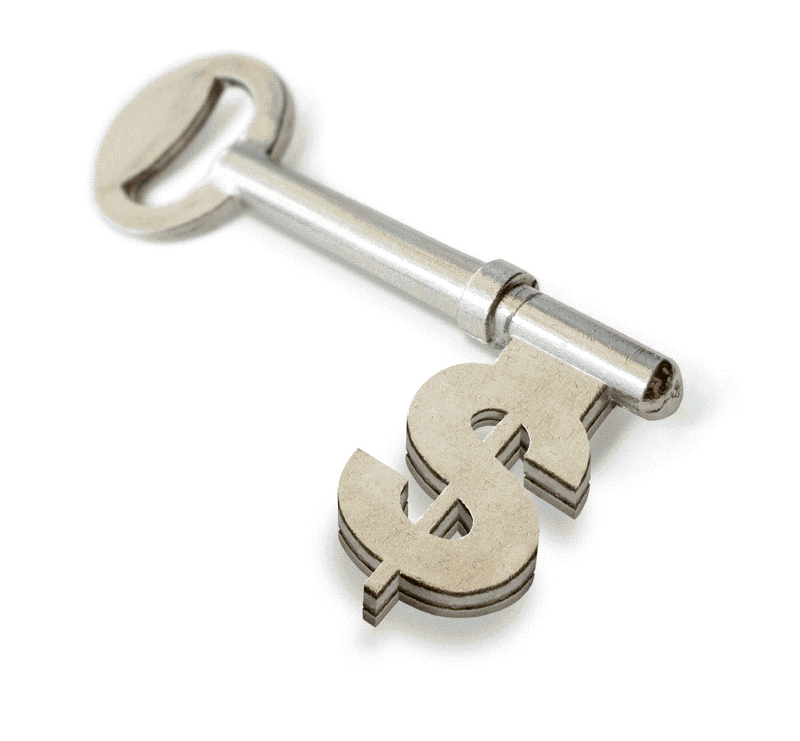Level IV — Start an Investment Account

Okay, so you’ve handled the basics. You’ve eliminated your bad debt, you’ve started a retirement account according to your retirement plan, and you’ve saved an emergency fund. It’s now time to start the intermediate levels. On to Level IV — investing!
There are few things you need to think about determining how you are going to achieve this level. First, do you have the time and inclination to learn about investing? If yes, then you can consider the complex option to this level. If not, then you need to proceed straight to the simple option.
For you to be able to take on the complex level, you’re going to need to read a few books, understand how to value an investment, and start to understand broad markets like the stock market and the commodities markets. You need to start understanding how inflation (or disinflation), commodity prices, interest rates and their direction, the growth in the economy and public policy affect the markets. So which option is best for you?
INVESTING OPTIONS
Simple Option
The first possibility is a simple option and it is to use the robo-advisor. A robo-advisor is a platform like Betterment, Wealthfront or Personal Capital that manages a portfolio for you of index funds based on an investment plan and a managed asset allocation. Using a platform like Betterment, in particular, allows you to set up goals with time horizons and an investment profile for each goal. You can set the duration of how long to reach the goal based on your risk profile and it will help create an investment plan for you. This makes the whole process automated, simply and manageable. The investment plan will outline your asset allocation for your portfolio and how much per month you need to contribute. This is a very good approach towards solid systematic goal-based investing.

Say for example, you want to have a goal of buying a house in 3 years. You think you need $60,000 for a down payment and you have a moderate risk profile. How much do you need to contribute every month and what do you need to invest in to reach your goal? Betterment’s platform handles the entire process. Based on these assumptions and configurations, the platform recommends you save $1,500 per month towards this goal. As time goes on and you start generating returns, the estimate contribution to stay on target may change, but you get the idea how this will help you manage to your goal.
Complex Option
A more complex approach requires you to set up a brokerage account and learn much more about investing.
If you’re going to pursue the complex option to investing, then you’re going to have to learn a some of the basics. One of the basics is about how to value an investment. Let’s start with stocks. Some of the basic fundamental indicators for how to value a stock includes PE ratio (Price / Earnings), PEG ratio (PE to Growth) Ratio, dividend yield and ROE (Return on Equity).
VALUATION CRITERIA FOR STOCKS
Let’s take each of those one by one. The PE ratio is the price to earnings ratio. This is generally how much you’re willing to pay per dollar of earnings. The average PE for a large cap company in the S&P 500 is 15. This means that most investors are willing to pay $15 in stock price for a dollar of earnings. The standard valuation model will change depending on the company sector and industry. For example. the high-growth tech sector may have an average PE of 25 while the low-growth utilities sector may average a PE of 8. But, the general criteria to learn here is what is a good PE ratio that represents value and what PE ratio represents over-valuation.
The next indicator is the PEG ratio, that is the price to earnings to growth ratio. This indicator measures price earnings to the company’s growth. In other words, this indicator is measuring how much an investor is willing to pay for growth. If a stock has a PE 15 and an average 15% per year of growth then the PEG ratio is 1.0. If the company has a PE ratio 30 and company has 15% annual growth, then the PEG ratio is 2.0. Generally speaking a PEG ratio of 1.0 indicates a good investment opportunity, and a PEG ratio of 2.0 or higher indicates a time to sell a company’s stock. An investor wants to be mindful about how much they are willing to spend on a company relative to its growth. If you’re investing for growth, this is a key indicator to follow.
The next indicator an investor wants to consider is the dividend yield of the company. This is a main indicator for the value sector of your portfolio; if you’re investing for value, this is an important indicator to follow. An investor would like to see a company have a dividend yield that is higher than the 10-year Treasury interest rate. So, for example, right now the 10-year Treasury is 2.3%. An investor would like to find companies that have a dividend yield higher than 2.3%. This will obviously adjust overtime as inflation and interest rates change. This is indicator does not work well for evaluating growth-based in assets or investments held. But, it is something that should be considered within your overall investment strategy.
When evaluating stock investment options, the final base indicator that should be considered when evaluating stock investment is the ROE or a return on equity. The return on equity indicator demonstrates a companies’ ability to generate a return per invested dollar. Generally, companies with good brands that don’t need large capital expenditures can generate a good ROE. Companies like Coke, Hershey, Intel or any big brands that are defendable can generally have higher ROEs. Companies with lower ROEs have less defensible business models. ROE is important because it shows a business’ efficiency in generating a return for shareholders.
DIVERSIFICATION
The next important factor to learn to become a good investor is diversification. I think it was Jim Cramer who said diversification is the only free lunch. Diversification allows an investor to manage and mitigate against various market changes. As an investor, you want different asset classes in your portfolio, which will all be affected differently against interest rate changes, inflation, economic growth and commodity price changes. One of the basic diversification calculation is percentage of stocks and bonds in your portfolio. Generally, I would break it into owning most of the following 9asset classes — US Stocks, Developed Market Stocks, Developing Market Stocks, Real Estate (REITs), Natural Resources (Timber & Oil), Gold, Corporate Bonds, US Govt Bonds and International Govt Bonds. Many go into other diversification like sector diversification or company size (large cap or small cap), but I think it’s more important to think about these larger asset classes. Based on your goal(s), time horizon and risk profile, you should think about diversifying your investment portfolio over these general asset classes. My favorite book on the subject is David Swensen’s, “Pioneering Portfolio Management”.

CONCLUSION
There’s no way to cover all the details that are required in handling personal investment in one article, but I hope I’ve given you some ways to approach winning at Level IV. The goal is to set up a system of investment. All investment dollars should be tied to a goal and all goals should have a time horizon, risk profile which lead to an asset allocation. You can use a platform like Betterment to help manage to your goals, you can hire a professional, or if you have the time and inclination, you can start learning about investing.
Most people start investing by learning how to invest in the public stock market. I agree with that, so I’ve outline a few points to think about on how to value whether you’re getting a good deal on an investment and how you should broadly diversify your investments. Once you’ve built a system and reach 1 financial goal, you’ve won at Level IV — Winning at Financial Freedom.
Happy hunting!
Disclaimer: The above references an opinion and is for information purposes only. It is not intended to be investment advice. Please do your own homework.
If you enjoyed this article, like it to help others find it! For more, join us on Facebook and Twitter and if you want to receive the latest weekly updates on Investing, Entrepreneurship & Personal Finance, feel free to subscribe to our NEWSLETTER.
Hi! I am a robot. I just upvoted you! I found similar content that readers might be interested in:
https://traveltoabroda.blogspot.com/